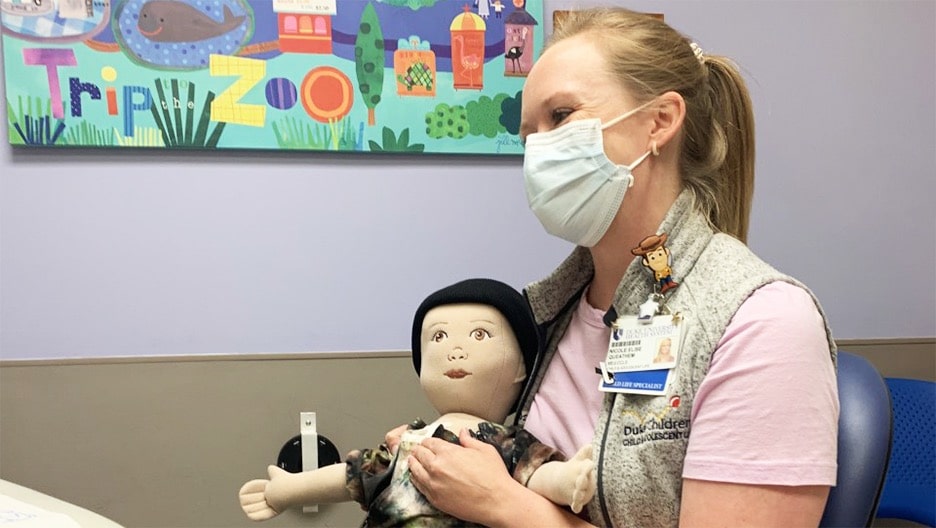“Helping to give children and their families the tools to realize their own potential and find that coping strength and resilience within themselves is my favorite part of the job.”
Nicole Queathem, MEd, CCLS
Receiving a cancer diagnosis is one of the most challenging things a person can endure in their lifetime. Suddenly, your life is upended. Tests, procedures, hospital stays and grueling treatment side effects become your new normal. But with the help of a Child Life Specialist, the cancer journey can be a little less frightening.
We spoke with Nicole Queathem, MEd, CCLS, a Child Life Specialist in the Pediatric Oncology Department at Duke Children’s Hospital, about her approach to patients and caregivers dealing with an osteosarcoma diagnosis and ways to navigate forward.

Explain a bit about your role as a Child Life Specialist in pediatric cancer care.
Nicole: My role is to help minimize stress and maximize adaptive coping and positive emotional well-being for children and their families going through medical experiences. My main goal is to provide communication, comfort and support every step of the way. I spend a lot of time educating patients on what to expect from their cancer diagnosis and I try to prepare them as much as possible. I’m also here to validate their emotions and meet them where they are on their journey.
How should conversations about a cancer diagnosis take place?
It is important to have discussions together as a family so that children feel safe and supported. But receiving hard information can be really challenging. There are times when parents need to hear a diagnosis before their child so that they can process it and figure out how they want to explain it to them. In that scenario, I provide parents and caregivers with developmentally appropriate and non-threatening ways to explain the diagnosis to their child or teen. I can also offer to lead these conversations if parents find that discussion overwhelming.
How do you explain cancer to a child?
The goal is to simplify complex terms in age-appropriate ways that they can understand. In the early stages of a diagnosis, I take one thing at a time, use simple explanations and keep things concrete. Here are some examples of how I simplify complex medical terms for young children:
● Tumor — A lump of stuff that’s not supposed to be there and can make you sick or hurt.
● Cancer — Stuff in your body that’s not working the way it’s supposed to and making you sick.
● Chemotherapy — A type of medicine that helps get rid of tumors.
● Port — A button that gets medicine into your body that helps that tumor go away.
Letting kids see and touch certain medical equipment that’s involved in their treatment process — such as a port — can also remove some fear and help them feel more in control.
How do you help osteosarcoma patients cope with changes in their body, such as hair loss or loss of a limb?
I spend time with them to talk about what’s happening in the body that will change. For example, with hair loss and younger kids, I talk about how, ‘Chemo’s main job is to make your tumor go away, but chemo is really strong and it can make your hair come out. But when you’re done, your hair grows back.’
In terms of the loss of a limb, we will address the change in their body and their appearance and give them the opportunity to ask questions. We invite them to see and touch the prosthetic before surgery so they’re familiar with it. If we have another patient and family who’s been through a similar procedure, I offer them the opportunity to meet so they can ask questions or talk about concerns.
Hair loss and limb loss are forms of grief, and as such can involve a range of emotions. We validate any and all emotions that patients have related to these changes. We recognize and work to promote the hope that comes with the removal of a tumor, but we also know that sadness, anger, frustration and numbness can also be a part of the process. These situations are very individualized, so we meet patients and families in whatever emotions they bring to the table and offer our support. Offering choices about how kids and teens want to cope with hair and limb loss (through hats, wigs, designing their prosthetic, meeting another family) is another way we work to return control and power to them.
What is your advice for families dealing with long hospital admissions?
Something that can really help with admissions is a schedule, which provides structure to the time patients and families spend in the hospital. Maintaining routines from home and scheduling activities throughout the day can help provide a sense of normalcy and order, promote active forms of coping (rather than passive or avoidant ones) as well as maintain balance in sleep-wake schedules (which can often be disrupted in the hospital).
What do you love most about this field?
I love helping children and their families realize the strength and resilience they already have within themselves to face these challenges. I remind my patients that this diagnosis is now a big part of your life, but it is not your whole life. My job is to help you figure out how to still be you while you are going through your cancer journey. Seeing kids figure out that balance is really rewarding and special.
Read more stories about the people powering OSI in The Frontline, our monthly newsletter. Click here to subscribe.
